Matador Network's Blog, page 1151
March 1, 2019
Texas man to retire in Holiday Inns

If you’re one of those people who stays in your hotel room until 10:59 AM, relishing every last moment of pampered bliss, this retirement plan might be your dream scenario. A Texas man seems to have it all figured out. Instead of retiring to a nursing home, he plans to spend his golden years at various Holiday Inns to save money.
Terry Robinson of Spring, Texas, posted the details of his plan on Facebook earlier this month. “With the average cost for a nursing home care costing $188.00 per day,” he said, “there is a better way when we get old and too feeble. I’ve already checked on reservations at the Holiday Inn. For a combined long term stay discount and senior discount, it’s $59.23 per night. Breakfast is included, and some have happy hours in the afternoon.” He goes on to explain the many other amenities offered by Holiday Inns, including a pool, spa, gym, and washer-dryer. He even points out that he can save money on toothpaste, razors, shampoo, and soap as those are provided by the hotel chain. Mainly, however, he is attracted to how the hotel chain treats you “like a customer, not a patient.”
And since Holiday Inns have over 1,100 locations around the world (according to USA Today), Robinson would be able to travel almost anywhere he wants, and still feel at home.
It goes without saying that Holiday Inns aren’t equipped to handle the same medical emergencies as nursing homes, but the stark price differential makes it worth it for Robinson — at least for now. 
H/T: The Hill

More like this: The 7 most exciting boutique hotels opening in 2019
The post This man found a genius alternative to nursing homes: Holiday Inns appeared first on Matador Network.

The Tokyo Roastery now open

The new Tokyo Roastery, which opened yesterday in Tokyo’s Nakameguro neighborhood, is now the largest Starbucks in the world and likely the fanciest. The Roastery is four-stories tall, surpassing the Shanghai Reserve Roastery, which previously held the title of the largest in the world.
The Tokyo Roastery houses the largest Starbucks Roastery cask ever, at 55 feet tall, spanning all four floors. The cask is made of hammered copper and decorated with hundreds of copper cherry blossoms as a tribute to Nakameguro’s famous flower.

Photo: Starbucks Partners/Facebook
From the comfort of your seat in the new roastery, you can actually see the famous cherry blossom trees along the Meguro River thanks to the building’s glass walls and terraced floors.

Photo: Starbucks Partners/Facebook

Photo: Starbucks Partners/Facebook
Coffee lovers won’t be disappointed by the Tokyo location’s offerings. There will be 100 unique coffee and tea beverages, and three bars. There’s the main coffee bar on the main floor, the Teavana Bar on the second floor, and the Arriviamo Bar on the third floor, which will serve coffee and tea-inspired cocktails, such as the Nakameguro espresso martini made with chestnut liqueur, crème de cacao and espresso, and the cascal lemon sour made with maple syrup, lemon juice, and cold brew coffee.

Photo: Starbucks Partners/Facebook
The Tokyo Roastery will also offer customers Italian baked goods with the Princi bakery, including pizzas, focaccias, cornetti, and freshly baked breads.
If you were worried this new roastery might lack Starbucks’ patented hipster vibe — fear not. The fourth floor will be home to the AMU-inspired lounge, which Starbucks says will “serve as a platform to host change-makers and creative thinkers from across Japan.” 
H/T: Travel & Leisure

More like this: 7 unique ways people drink coffee around the world
The post The most luxurious Starbucks in the world just opened in Tokyo appeared first on Matador Network.

Where to eat and drink at Haneda

Haneda Airport opened in the 1930s and served as Tokyo’s primary international airport until the late 1970s. Narita Airport took over after that, much to travelers’ dismay thanks to the dismal food and shopping options as well as its long distance from Tokyo proper. Thankfully, Haneda again opened for international travel in 2010 and is now one of the busiest airports in the world — and has one of the best airport food scenes.
The best options are pre-security at the Edo Market. In fact, if you’re going to eat at the airport at all, your best choice is to delay going through security and hanging around Edo Market’s many restaurants and shops. There are a couple of other options at some of the other gates, however, as well as an eye-catching place in Pop Town next to Edo Market pre-security.
These are the best places to eat at Tokyo’s Haneda Airport.
Note: The area around gates 105-108, 131-139, and 145-146 have negligible options. We repeat: Stay in Edo Market.
Edo Market
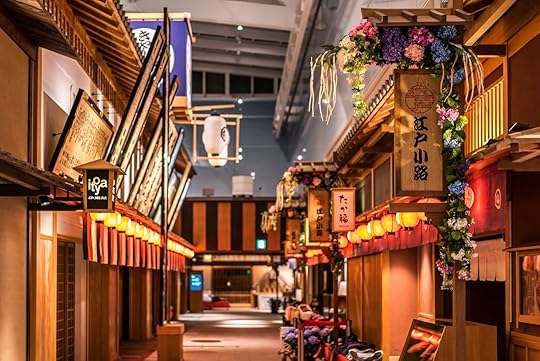
Photo: JHENG YAO/Shutterstock
Katsusen: Come for the deep-fried pork in all the ways you’d like to have it — sandwich, cutlet, solo, on top of a pile of vegetables, you name it. Katsusen has to-go options if you made the mistake (or are just unlucky enough) to not have leisure time at Haneda Airport.
Champion Yakiniku: You know all those menus you see around the US touting wagyu beef? It’s mostly fake. Wagyu is a Japanese cattle breed, and it tastes best in its homeland. Yakiniku has to-go boxes with options like wagyu sushi rolls and wagyu over rice.
Ariso: Sushi doesn’t have to be a time-consuming eating affair. Ariso serves sushi off a conveyor belt that’s all quality despite the lax presentation.
Takafuku: Where to get your last taste of sukiyaki. Sukiyaki is a traditional savory dish of beef and vegetables that’s dipped in raw egg. Grab the lunch meal or dinner meal complete with rice and miso soup.
Tsurutontan: Soup bowls that will revive your senses after a long flight or prep you for the long haul ahead. Tsurutontan has huge udon noodle soup bowls and dry noodles too.
Itoen: Maybe you’re not really hungry and just want something to cure your sweet tooth. Maybe you already stuffed yourself silly and still have some time and don’t know what else to do but eat more. That’s when you head here for tea, green tea sweets, and matcha ice cream.
Tokyo Pop Town
Planetarium Starry Cafe: If you really want food, stick to Edo Market. For a light meal and some coffee, however, it’s hard to beat a trip to Pop Town. The Planetarium Starry Cafe has your usual cafe offerings all served under a planetarium with 40 million stars — the first, the company says, airport terminal with built-in star gazing.
Gates 109-111
Hokkaido Kitchen: A small, 18-seat restaurant that’s a branch from a popular Japanese restaurant group. Soups and curries are the main draw.
Uraraka: Yakitori and udon noodles for food, with the main draw being all of the different sakes.
Gates 112-114

Photo: Phuong D. Nguyen/Shutterstock
Uogashi Nihon-ichi: Fresh sushi straight from Tokyo’s famous fish market. Worth a stop even if you only have time for a couple of pieces.
True Soup: The rare airport restaurant with a clearly marked vegan menu. It’s not Japanese, but the minestrone soup is about as far as vegans will get in Haneda, and there are plenty of vegetarian soups as well.
Bar Rage: Japanese cocktail culture is undeniably great. Get one last cocktail from Bar Rage, which focuses on cocktails made with fresh fruit and Japanese ingredients. 

More like this: 12 spots to frequent in Tokyo if you want to be a true local
The post The best places to eat at Tokyo’s Haneda International Airport appeared first on Matador Network.

Win a $2,000 scholarship to travel

If you’re looking to travel the world but find yourself short on funds, you might want to move fast on this scholarship opportunity. Hostelling International USA is looking to award over 86 scholarships to aspiring world travelers, in the amount of $2,000 each. It’s important to note, however, that your travel plans don’t simply consist of you sitting on a beach in Bali for two months. The trip must include a valid educational component. In 2018, for example, HI USA awarded 104 scholarships to students pursuing a wide range of educational activities abroad, including learning Arabic in Jordan and teaching math in the Dominican Republic.
To apply, you must:
Be a US citizen between 18 and 30 years old at the time of application
Demonstrate financial need
Plan to visit a destination outside of the US between May 15, 2019 and August 31, 2020
Reside or attend school in a select range of cities
For a full list of participating cities, visit the official application page. In your application, you should also be prepared to demonstrate your strong desire to travel and experience other cultures. This is important for setting yourself apart from the competition.
If you’re selected, you will be expected to post at least three photos and/or status updates to Instagram and/or Twitter during your trip, with the tags #exploretheworld and @HIUSA. Upon your return, you must provide a report of your travels, complete a post-travel survey, and submit three additional photos. $1,000 will be paid prior to the trip, with the remaining $1,000 paid upon return.
Winners will be selected by a scholarship committee, and announced by April 10, 2019. The application deadline is March 2, so if you’d like to apply, you must do so before tomorrow. 

More like this: The 25 places you need to travel to in 2019
The post Get a $2,000 scholarship to travel anywhere in the world appeared first on Matador Network.

February 28, 2019
Best things to see in Kraków, Poland
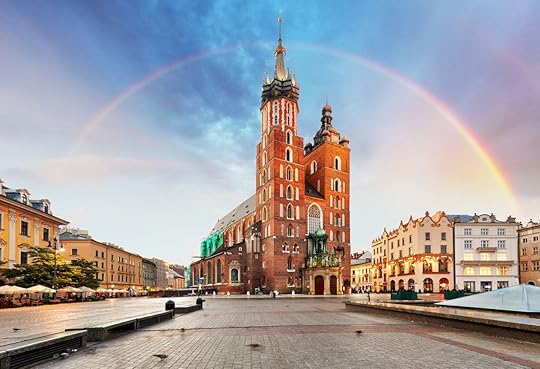
While the Second World War brought destruction to all other major cities in Poland, the buildings of the city of Kraków in the south of the country largely escaped the fighting and bombings. In 1978, the entirety of Kraków’s old town was declared a UNESCO World Heritage site, a clear indicator that travelers should not skip this city. Here are nine sights that prove Kraków is the most stunning city in Poland.
1. The Cloth Hall

Photo: Tomasz Mazon/Shutterstock
In the middle of one of the most beautiful medieval town squares in Europe, the Cloth Hall is one of Kraków’s most recognizable buildings. Wander through the archways of this cream and brick edifice into the center passage lined with stalls selling souvenirs like amber jewelry, wooden boxes, or religious icons and lit by ornate lamps. Step outside again and admire the townhouses which surround the square, painted in bright colors.
2. The Wawel
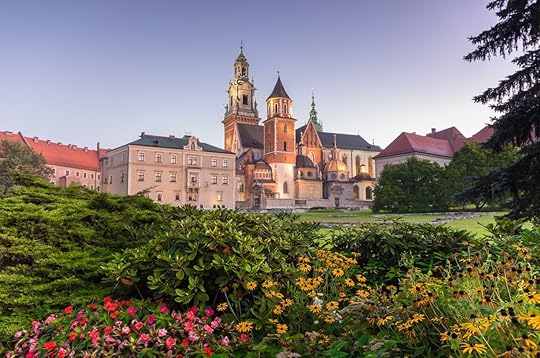
Photo: Tomasz Mazon/Shutterstock
Located on a hill overlooking the Vistula River, the Wawel is a large complex of buildings, the most famous of which are the royal castle and the cathedral. There is a museum inside, but the exteriors are more impressive than any of the exhibits, which are temporarily closed in 2019. Some of the oldest stone buildings date back to the 11th century, and the collection of church towers and spires, turrets, and wide courtyards are fairy-tale worthy.
3. St. Florian’s Gate and Floriańska Street
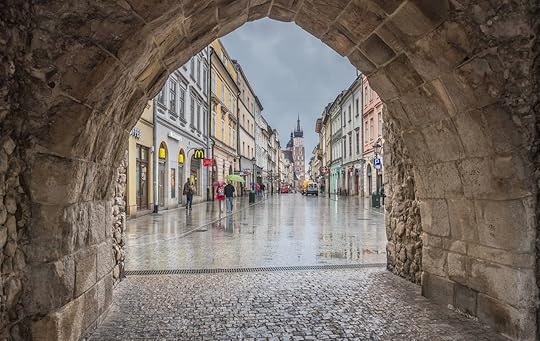
Photo: MoLarjung/Shutterstock
St. Florian’s Gate is Kraków’s most important medieval gate. The gate, built in the 13th century, was one of eight gates set into the walls that fortified Kraków and is the only one still standing today. The gate is still the main entrance to Kraków’s old town, so it’s here that most visitors get their first glimpse of the city. The large Gothic gateway with its white stone towers opens onto the wide cobbles and colorful houses of Floriańska Street.
4. St. Mary’s Basilica

Photo: RossHelen/Shutterstock
Opposite the Cloth Hall in the main market square, St. Mary’s Basilica is a brick structure with two large towers. The north tower served as a watchtower for the city and every hour, on the hour, a man plays a bugle call from it. Every day, the call cuts off suddenly in commemoration of the watchman who was shot in the neck while sending out a bugle call in warning of the Tartar invasion of the city in the 12th century.
Step inside to be met by incredibly ornate decoration; the walls are deep reds and gold, the ceilings blue and seemingly covered with twinkling stars. The 15th-century Gothic Altar of Veit Stoss is also a major tourist draw. Carved in wood and richly decorated, it was considered so precious that it was dismantled and hidden during the war. Despite the efforts of the Poles, it was found by the Nazis and transported to Nuremberg, before being returned to Kraków after the war. The altar opens up every day at 11:50 AM. Tread carefully in the nearby Mariacki Square — it was built on top of the old cemetery in the Rynek Underground.
5. Kanonicza Street
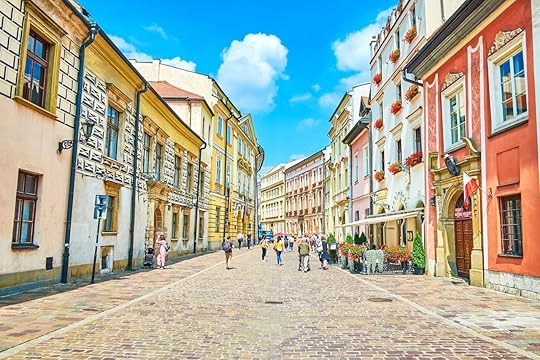
Photo: eFesenko/Shutterstock
Kanonicza Street was part of the old Royal Route that led from St. Florian’s gate to the Wawel, along which paraded victorious kings, visiting dignitaries, and religious leaders when Kraków was Poland’s capital (until 1596). The houses that line the street are of Renaissance and Baroque styles and painted in pastel hues — the street is Instagram-perfect. You can also slip into several quiet stone courtyards off the street to escape the throngs of tourists Kraków endures in the summer months. Look out for house number 19, which was once the residence of Poland’s most beloved son, Pope John Paul II.
6. Plac Bohaterów Getta
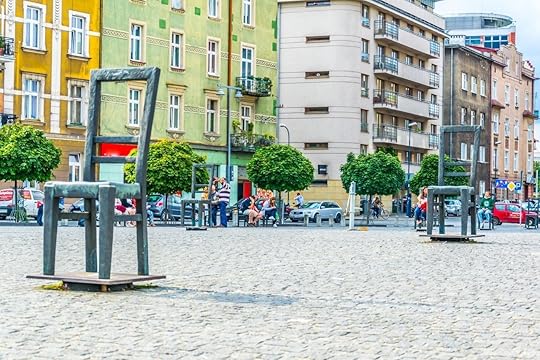
Photo: trabantos/Shutterstock
This square is in the center of the former Jewish ghetto, Podgórze. It was here that Kraków’s Jews were forced to live, stripped of their possessions, and eventually deported to the concentration camps. Seventy large and small cast-iron chairs are set across the square’s cobbles, a sobering reminder of those who were lost during this terrible period in Poland’s history. They make a sharp contrast to the colorful townhouses that ring this lively square. It’s a place to reflect on Kraków’s past.
7. Collegium Maius Courtyard

Photo: eFesenko/Shutterstock
Collegium Maius, a gorgeous red-brick edifice, is the oldest building in Kraków’s Jagiellonian University. The arcaded courtyard, dating back to the 15th century, is the highlight of a visit. Go early in the morning before the students wake up and the tourists arrive. It makes it easier to picture Nicolaus Copernicus, one of the university’s most famous students, scribbling math or astronomy notes. You can also take a guided tour, which will take you through the library among other places.
8. Rakowicki Cemetery

Photo: Mikolajn/Shutterstock
Kraków’s Rakowicki cemetery is relatively unknown among foreign tourists, so it’s a very tranquil spot if you want to get away from the crowds. Gravestones and mausoleums line the wide, cobbled walkways and are shaded by overhanging trees. The cemetery hosts the graves of famous citizens, many of which are topped by magnificent sculptures, as well as small, weather-beaten headstones of ordinary Cracovians. You will often see colorful lanterns with candles flickering inside placed on the graves here. Poles leave these lanterns as a way of honoring those they have lost; on November 1 — All Saints’ Day — you will see the cemeteries ablaze with light, but lanterns can be seen year-round. Look for the graves of famous Polish painter Jan Matejko, poet Wisława Szymborska, and the parents of Pope John Paul II.
9. Old Synagogue

Photo: Pawel Kazmierczak/Shutterstock
Kraków’s Old Synagogue stands in the middle of Kazimierz, the old Jewish district of Kraków. Though very few Jewish people remain in the city, it is possible to see rabbis walking through the throng of hipsters who congregate in this trendy neighborhood. Built in the 15th and 16th centuries, the Old Synagogue is the oldest surviving example of Jewish architecture in Kraków. The rather austere exterior doesn’t reflect the treasures to be found inside. The inside of the synagogue was ransacked during the German occupation in the 1940s, but it has been beautifully restored with high vaulted ceilings in the main prayer hall.
The synagogue stands on Szeroka Street, which was at the heart of Jewish life in Kazimierz and now attracts tourists for its merchant houses and restaurants serving Jewish food. Visiting hours vary depending on the season; regular tickets cost about $3, and a very worthwhile audio guide is an extra $2.50. 

More like this: 11 amazing things to do in Poland that will get you stoked to visit
The post 9 sights that make Kraków the most beautiful city in Poland appeared first on Matador Network.

Hiking near Eastern European cities
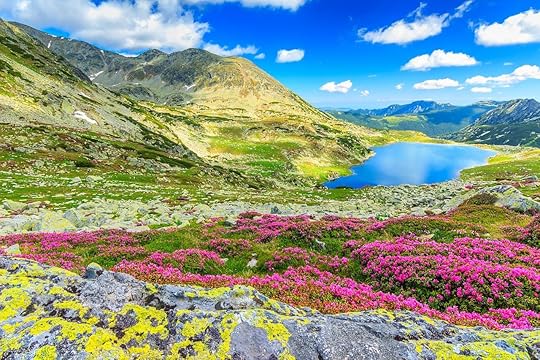
Castle ruins. Blooming wildflowers. Goulash. All three are common in Eastern Europe during spring, and trekking the high ranges that criss-cross many of the region’s 25 countries is the best way to experience at least two of the three. Mid-to-late spring is an optimal time to get over there because the tourist flocks that swarm Europe during the summer months are still bundled up around the fireplace back home. From cities in Poland to Montenegro, these urban destinations offer easy access to stellar spring trekking as early as April. Just don’t forget some crampons and trekking poles — you’ll likely encounter snow and ice in some areas this time of year, especially if you’re summiting a peak.
1. Krakow, Poland
Access: The Polish High Tatras

Photo: Pawel Kazmierczak/Shutterstock
The Polish High Tatras are stunning any time of year, but spring offers the bonus of budding flora and far fewer hikers. The range runs along the border between Poland and Slovakia. Krakow is the nearest major city and airport, and from there you’ll take a bus to the mountain town of Zakopane. The ride takes two and a half hours and shouldn’t cost you more than $5. The High Tatras are covered in trails, with routed options from in and around Zakopane ranging from quick day hikes to treks pushing 30 kilometers and longer.
Routes and trails:
There are hundreds of trails to choose from. These three are popular and well-marked, and each is doable in a day.
Rysy Peak — Rysy draws thousands of peak baggers from across the globe each year, most of whom come during the summer months. At 8,199 feet, it is the highest peak in the Tatras and in all of Poland. After warming up with a casual stroll through the woods the hike gets real steep, real fast. You’ll encounter chains along much of the trail to help with stability on the way up and down, though their use is optional. That said, the hike is very doable for most in decent physical condition as the 3.1-mile hike only takes about four hours. Start at Czarny Staw and work your way up until you hit the summit, keeping an eye out for deer and other wildlife along the way.
Gąsienicowa Coomb — This hike of roughly six miles is doable in a half day if you hurry. It’s an out-and-back that ends at Hala Gasienicowa, a gorgeous site which overlooks the Tatras peaks. The trailhead is in Kuznie, a tiny village just outside of Zakopane, and the path up is clearly marked. During open sections of the hike, you can see the towering peak of Giewont in the distance.
Swinica — This quick hike is the toughest trail hour you’ll put in this year. It’s roughly one mile of thin and highly exposed trail with a fair amount of bouldering necessary, with incredible 360-degree mountain views from start to finish. Get on the trail at Zawrat, follow the red trail, and don’t be embarrassed to use to chains along the way to keep yourself secure.
2. Sofia, Bulgaria
Access: Vitosha, Rila Mountains

Photo: phantomlord78/Shutterstock
Bulgaria’s capital sits right at the base of Vitosha, an imposing mountain that offers ample trekking right near the city center. Sofia is also about two hours from the Rila Mountains, home to trails for hikers of all ability levels. Warm up for your trek with a walking tour of the city center, then put on those hiking boots and get out of the city. To access the Rila Mountains, head from Sofia to the town of Dupnitsa, which is doable by bus if you don’t rent a car.
Routes and trails:
Vitosha — Late spring, from the end of April onwards, is the best time to summit Vitosha because the trail is fully accessible and the weather in Sofia sits pleasantly in the 60s and 70s. Plus, hot tea and cold beer await at the summit, courtesy of a teahouse in the permanent weather station situated there. Look for trail signs to Cherni Vrah, the mountain’s high point, accessed from a chairlift coming up the Sofia suburb of Dragalevtsi. The hike from the top of the lift to the summit takes about 1.5 hours. There are many other trails on the mountain, including to Kamen Del to overlook the city below and to the Boyana Waterfall.
Seven Rila Lakes — You can guess what awaits you on this hike. The Seven Rila Lakes trailhead is just outside of the village of Sapareva Banya, about 20 minutes from Dupnitsa, accessed via a paved road. The hike up to the lakes and back takes about four hours.
Mt. Musala — At 9,600 feet, Mt. Musala is Rila’s highest peak and a popular day hike from Dupnitsa. A chairlift at the Borovets ski area takes you most of the way up, and the remaining hike takes about three hours each way.
3. Brasov, Romania
Access: Carpathian Mountains

Photo: Mountain Cubs/Shutterstock
The Carpathian Mountains take up roughly one-third of Romania, making the city of Brasov the most ideal city to base yourself in for Eastern European trekking. The city is colorful during spring, as flowers bloom in the parks and alongside the cobbled streets of old town. Brasov also has a lively cafe and pub culture ideal for celebrating a good hike.
Routes and trails:
Piatra Craiului National Park — This should be your first outing and can even be the only outing if you’re up for a multi-day backpacking trip. The park is home to over 70 trails, and you can access most of them by starting at either the Zarnesti or Pestera trailheads. Follow the red dot trail to bag La Om, the park’s highest summit at just over 7,300 feet.
Ciucas Peak — This 6,410-foot peak takes about eight hours round trip from the trailhead at Muntele Rosu, which is just over an hour by car from Brasov. You’ll see the grass-covered spires of the peak guiding you in from the trailhead.
Iezer-Papusa — To access the Iezer-Papusa mountains, head out of Brasov towards the village of Leresti. Here you’ll find the trailhead for Red Peak, which leads you across a vast ridgeline towards the summit.
4. Podgorica, Montenegro
Access: Durmitor National Park, Lovcen National Park
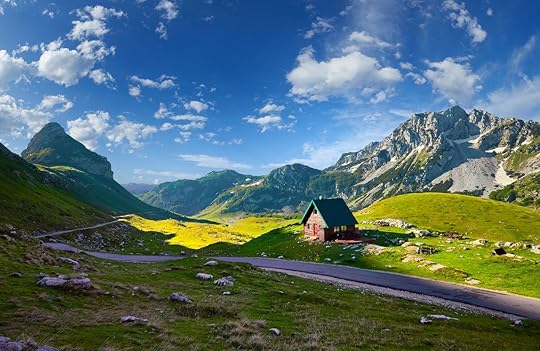
Photo: Zick Svift/Shutterstock
In Montenegro, you can summit a peak and chill on the Adriatic coast in the same day. Podgorica, the country’s capital, offers quick access to Durmitor National Park, about two hours away, and while you’re likely to encounter snow on the park’s peaks, the lower elevation trails are accessible and closer to the coast. Hiking season typically begins in late March.
Tara River Canyon — The world’s second deepest canyon — behind only the Grand Canyon — is located inside Durmitor National Park and known locally as the “Tear of Europe.” The trek in from the town of Zabljak, located inside the park, is about 6.2 miles each way and leads you right up to the edge.
The Ladder of Cattaro — Closer to the coast, get ready to switchback your way from the town of Cetinje to the bayside town of Kotor. More than 70 switchbacks lead you up and down a former military trail that passes the ruins of old forts and monasteries as it winds you through the mountains. 

More like this: Why the Alps you actually need to visit are in Eastern Europe
The post 4 Eastern European cities with easy access to spring trekking appeared first on Matador Network.

At-risk UNESCO World Heritage sites

If you’re able to visit Mariposa Grove in Yosemite, the Kathmandu Valley in Nepal, or Pompeii in Italy today, it’s because the sites were protected and saved by conservation efforts. The United Nations Educational, Scientific, and Cultural Organization (better known as UNESCO) is the international governing body that declares endangered sites worthy of the world’s highest legal protection. UNESCO strives to ensure that sites of cultural and natural significance attract sustainable tourism and protection in the hopes that the sites and the people who live nearby will thrive. As with many other endangered sites, the following 11 places are on UNESCO’s “World Heritage Sites in Danger” list because of already ascertained or potential dangers like war, urbanization, human behaviors, or natural disasters. They’re each incredibly fascinating and still under threat, as the fragile balance between humans and heritage is in constant negotiation.
1. Everglades National Park — United States of America

Photo: Galyna Andrushko/Shutterstock
The subtropical Everglades, located in Florida, is North America’s largest designated wilderness area where a slew of aquatic and terrestrial ecosystems meet up to house more than 20 rare, endangered, and threatened species. Florida panthers, leatherback turtles, and manatees are a few of the better-known animals the ‘Glades protect, and it’s the only place in the world where American crocodiles and American alligators coexist. The 1.5-million-acre national park also contains both the largest mangrove community and sawgrass prairie, rendering it vital to wading birds’ breeding and migration. Threats to this fascinating preserve include urban development, hunting, and mercury poisoning to name a few. It’s not difficult to visit the park, and there’s plenty to do — like canoeing, cycling, and learning about the indigenous Miccosukee tribe’s practices.
2. Chan Chan Archaeological Zone — Peru

Photo: Chris Howey/Shutterstock
Situated on Peru’s north Pacific coast, Chan Chan was the capital of the pre-Inca Chimú people, who from the sand built the largest city in pre-Columbian America. The city was divided into nine autonomous citadels. About 2.3 square miles remain of what was once a much larger site. Roads, temples, agricultural fields, and some huge friezes are still there, but threats include climate, especially the increasingly volatile effects of El Niño on the earthen structures. Illegal farming practices in the nearby river valley also compromise the site’s protection. However, with the collaboration of Peru’s Ministry of Culture and many experts, UNESCO has helped restore and conserve much of the city. Chan Chan is easy to visit. It takes several hours to wander through the giant site. Hiring one of the Peruvian tour guides helps sustain the regional economy and discourage vandalism.
3. Rainforests of the Atsinanana — Madagascar

Photo: Homo Cosmicos/Shutterstock
Six national parks combine to form this endangered site along the eastern side of the island of Madagascar. For the past 80 million years, when Madagascar broke off from Africa, plants and animals have evolved in isolation, and now, some 85 percent of the fauna and flora on Madagascar lives nowhere else. Primates are particularly threatened, especially lemurs. Management policies mitigate threats to biodiversity, like agriculture, gem mining, hunting, bushmeat poaching, and logging of rare hardwoods. UNESCO and Madagascar regulatory bodies seek to expand the parks while maintaining wildlife corridors between them. Infrastructure and transport on the island are iffy; most roads from the capital city Antananarivo are rutted-out dirt paths, and most rental car companies won’t rent to you without a professional driver. Boat rides are expensive. Many visitors base out of Masoala National Park and hire a local guide — especially if they, like most, want to see an elusive aye-aye.
4. City of Potosí — Bolivia
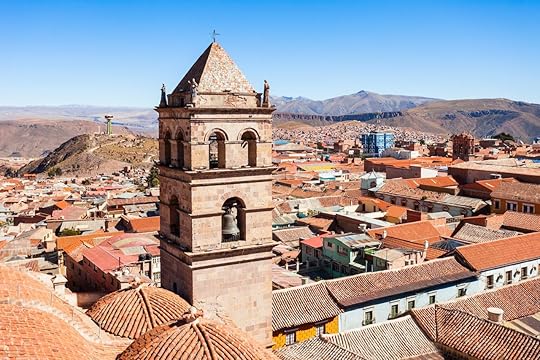
Photo: saiko3p/Shutterstock
A more recent site of cultural value, the Bolivian City of Potosí was, in the late 1500s, perhaps the world’s largest industrial complex. At 13,000 feet elevation, Potosí was first a tiny Andean village, until Pizarro came along in 1572 and discovered the largest silver lodes in the Americas. Potosí became the main exporter of precious metals to Spain, and then Spain started building baroque architecture and arts in the area. Today, mines, mining-related infrastructure, Spanish-style churches, and the stunning mountain scenery remain. However, the mining technology of the time has left the mountains geologically unstable, and therefore the city, human lives, and the ecology are threatened. UNESCO calls for urgent action to reinforce against deterioration. Potosí is tourist-friendly with infrastructure and year-round temperate weather. The altitude takes some getting used to, though, so acclimate slowly to visit this endangered World Heritage site.
5. Okapi Wildlife Preserve — Democratic Republic of the Congo

Photo: Jiri Hrebicek/Shutterstock
Okapis look like “zeers,” a fusion of zebras and deers, but they’re actually a forest giraffe — and one of the planet’s earliest mammals. They’re endemic to this eastern sector of the Democratic Republic of the Congo (DRC), and they peacefully graze among 7,000 chimpanzees, forest elephants, and the rare bongo and water chevrotain. The Okapi Wildlife Preserve makes up about 20 percent of the Ituri Forest. Protecting this forest is imperative for the wellbeing of the Efe and Mbuti pygmy people who rely on it for their subsistence. These cultures are involved with the protection and security of the preserve. All outsider hunting is prohibited (indigenous hunting is ok) but remains a threat to the ecosystem. Carefully planned roads traverse the forest, leaving wide corridors so wildlife is safe. The preserve is under fire from militias, which have twice blown up the park headquarters and nearby indigenous villages. As such, it’s not possible at this time to visit the park.
6. Center of Vienna — Austria

Photo: LaMiaFotografia/Shutterstock
One might not think that a city like Vienna — known for its musical culture, architecture, and amazing coffee houses — would be on UNESCO’s list of endangered World Heritage sites. However, urbanization threatens its cultural heritage, including but not limited to its diverse historical architecture, which extends from the time of the Roman Empire. Urban development plans are in high gear to create a buffer to protect the city from traffic. UNESCO and many other protective bodies also seek to improve environmental conditions. The wealthy city of Vienna has every tourist amenity, from an airport to trains to a range of hotels. But tourists generally don’t know that they’re exploring a highly endangered cultural heritage.
7. Tropical Rainforest Heritage of Sumatra — Indonesia

Photo: nomads.team/Shutterstock
The three national parks within the almost 9,600 square miles that comprise the Tropical Rainforest of Sumatra are home to more than 10,700 species of plants and animals. Many of those critters live nowhere else in the world. The gentle, critically endangered orangutan is probably the best known endemic species. The site receives the highest protection under Indonesian law, as well as UNESCO support. However, logging, mining, and human encroachment continue to threaten the parks’ biodiversity and landscapes. The UN recommends more policing against poaching and other illegal practices, as well as invasive species management. The whole Sumatran rainforest is stunning, but the best staging ground to see orangutans is Bukit Lawang, one of the three parks. Local guides can take you trekking and conservation-minded hotels abound.
8. Rock-Art Sites of Tadrart Acacus — Libya

Photo: Patrick Poendl/Shutterstock
This site was a veritable prehistoric art gallery with artists making thousands of pictographs starting as far back as 14,000 years ago and continuing for 12,000 years. The designs reveal the changing lifestyles of the people of the Sahara, as well as the plants and animals with which they shared the land. Colorful designs show everything from the antics of prehistoric musicians to ostriches and giraffes. Tadrart Acacus is also the site of the earliest evidence of milk on ceramics. Looting, vandalism, and development are major threats the site faces. The nearest town is the rather remote Ghat, Libya. From there one must take a four-wheel-drive vehicle (and ideally a local guide) to the stunning Acacus Mountains, which demark part of the nation’s border with Algeria.
9. Classical Gardens of Suzhou — China
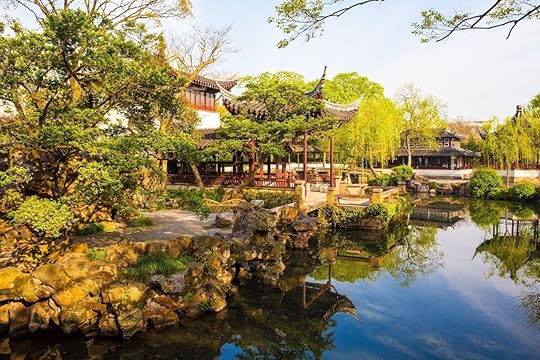
Photo: Meiqianbao/Shutterstock
Historic Chinese gardens are known for their beautiful integration of natural elements like water, rocks, and paths to reflect dynastic cultural and intellectual values. Generations of Jiangsu Province gardeners have maintained the botanical artform for the last 8,000 years. Sixty or so of the oldest gardens still exist. Thanks to international, national, and local efforts, the gardens remain well preserved and a part of the region’s identity. Long-term preservation goals include reducing urbanization near the city of Suzhou where the protected gardens are concentrated.
Another aspiration is to improve the living conditions of the residents of the area. Sustainable tourism can encourage the local perception of cultural heritage as valuable and provide a steady economic incentive. It is not difficult to visit the amazing city of Suzhou and its many gardens. It is situated on the delta of the Yangtze River between Shanghai and Nanjing. High-speed trains go by daily, hotels are plentiful, and guided walking tours are readily available. China’s 144-hour visa-free tourism transit program applies to Jiangsu, allowing six days to explore the gardens.
10. Cultural Landscape and Archaeological Remains of the Bamiyan Valley — Afghanistan

Photo: Vilion Fok/Shutterstock
Bamiyan sadly became famous in 2001 when the Taliban destroyed the two colossal Buddha statues that graced its cliffs. The gaping holes where the statues were remind visitors of the evilness of such acts, but the Taliban didn’t win. The eight designated sites throughout the Valley still have much to offer. Monumental Buddhist sanctuaries, monasteries, and art from the first to the 13th century abound. Partially due to UNESCO protections and community-level collaborations, the Bamiyan Valley is comparatively politically stable and might soon be removed from the endangered list. Visiting the valley is tough but doable with the right visas and permits. Four-wheel-drive minivans leave Kabul, Afghanistan, early in the morning for the eight-hour, dusty voyage, passing checkpoint after checkpoint. A local guide is necessary.
11. Pre-Hispanic Town of Uxmal — Mexico
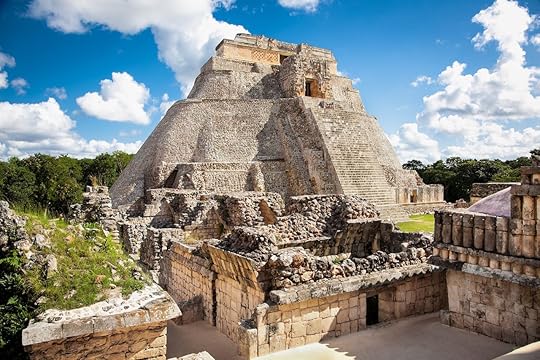
Photo: Aleksandar Todorovic/Shutterstock
At its height, in 1400 or so, the vast city of Uxmal in Yucatan, Mexico, was home to roughly 25,000 Maya people. They built temples like the Pyramid of the Magician rising up to 12 stories tall, using three separate Mesoamerican architectural styles. The Governor’s Palace temple features the longest mosaic in the entire Maya homeland — 320 feet long. UNESCO indicates that it protects this particular Maya site because it “represents the pinnacle of late Maya art and architecture” and reveals much about the economy, iconography, and Maya understanding of astronomy.
For a long time, Uxmal was difficult to get to and protected from human encroachment and activity; now, there’s a paved toll road from Playa Carmen straight to the site. There are hotels and restaurants adjacent to Uxmal, as well as light shows and guided tours — all of which could help sustain the regional economy. There are concerns, though, that under-regulated tourism could deplete environmental resources and lead to vandalism and site degradation. 

More like this: 8 of the most underrated UNESCO sites you need to visit
The post 11 amazing UNESCO World Heritage sites in danger of disappearing forever appeared first on Matador Network.

How to work and travel the world

Finding a fulfilling job that lets you travel the world is not as rare as it may seem. Aside from short-term or volunteering opportunities, there are jobs in all sorts of sectors, from healthcare to sound tech, with plenty of scope for professional development and earning a steady income. If you are looking for a new challenge, here are some of the best careers that set you up for traveling the world.
1. Teaching English
Native English speakers can think about funding a life abroad by teaching English as a foreign language. You can pick pretty much any destination in the world and find teaching-related jobs, even countries where the native language is English.
You’ll need to have a teaching qualification to get a job, such as a TEFL (Teach English as a Foreign Language) certification. Qualification courses can be followed online, though the best courses have some classroom hours too. Provided you have a university degree as well, you can have the requirements you need to teach within a few months. There are plenty of jobs out there, from private language schools to teaching in companies to using Skype to teach online.
2. Teaching yoga, photography, painting, music, etc.
Teaching, in general, is a career that leaves you relatively free location-wise. If you have a niche hobby and think you’re skilled enough to begin teaching it to others, then look at finding yourself a course on how to become an instructor in that particular field.
You could think about doing the instructor course itself abroad, for example, yoga instructing in Bali or becoming a surf instructor in Australia. With a course under your belt, you can look at joining a pre-existing teaching center for your chosen skill or going freelance. You can search websites posting job opportunities abroad for your sector, such as yoga, massage and wellbeing, or scuba diving.
3. Cruise ship entertainer
You need to know several languages, have plenty of confidence, and have an inexhaustible imagination in order to do this job. However, you will never be bored, as you may be required to do anything from hosting fashion shows to organizing kids games.
You won’t get many hours off in this job, but you will get transported all over the world with food and accommodation provided. Other jobs on cruise ships also give you similar advantages, and you can search for open positions online. It might be difficult to know which position to hunt for, and the interview process can be tough, so read up on these tips before you apply.
4. Flight attendant
Just like working on a cruise ship, becoming a flight attendant means free transport all around the world, as well as discounted fares when booking with the airline for personal trips. You don’t need a degree, but preference is given to those with some customer service experience, and knowing a language or two doesn’t go amiss. To start a possible career, you’ll need to take courses for certifications or an on-the-job training program. You also need to be prepared for a lengthy interview process when applying for jobs. Your first few years in the job can be pretty tough. The hours are erratic, the starting pay isn’t great, and it can put a strain on relationships and families when you are called out unexpectedly or keep missing Christmas. But a few years down the line, you can have more control over your schedule and destinations.
5. Busking
On the opposite end of the scale, if you are happy to live a more alternative lifestyle and you can play an instrument or sing, then busking is an activity you can do almost anywhere in the world. The income is often low and unreliable, but there are lots of lively festivals and events you can take part in. The oldest buskers’ festival in Europe takes place in the medieval city of Ferrara in Italy during the summer while Canada has various festivals through the year, including one in Halifax in August that takes place on the waterfront.
One way of earning more money is to apply for a busking permit or license in city centers like London. One of the most lucrative locations is the London underground. It has seen buskers like Ed Sheeran and Jessie J perform there, so be prepared for some fierce competition during the application process.
6. Travel writer
It’s one of travel lovers’ most desired careers — to be paid to travel to different countries, get stuck into local life and experiences, and then write about it. It comes with a cornucopia of perks, including free nights in hotels, free tour guides, and discounts on pretty much anything.
It’s not an easy career to get into, however, especially if you want to make it your full-time income. It definitely helps to start with a personal blog so that you can demonstrate your writing experience. Keep thinking constantly about improving your writing quality by keeping journals of your experiences and reading anything travel-related. Then it requires dogged determination to get writing gigs in newspapers and online magazines. It may be a slog at first, but gradually you’ll make contacts in the industry, which may lead to a regular slot in a magazine or commissions.
7. International aid worker
In contrast to staying in luxury hotels for free, becoming an international aid worker will introduce you to the grittier sides of the countries you visit. Working in this job, you’ll have the chance to make a real impact on communities, like helping Syrian refugees in Lebanon or giving tsunami disaster aid in Indonesia.
It helps to have a background in health work, social services, or international relations. It’s a physically and emotionally draining job, but it will teach you how to deal with challenging situations, give you a sense of satisfaction, and give you an experience that will stand out on a resume. You’ll get access to places in the world most people will never get to visit. Have a look at websites of organizations such as Doctors Without Borders or the Red Cross for job postings.
8. Foreign service officer
Another hard-hitting career path is working as a foreign service officer. There are embassies all over the world that you can work in, giving you the opportunity to live and travel within other countries, especially as officers are often assigned new places every few years. According to the US Department of State careers website, applicants need to have problem-solving skills and are expected to be “well-rounded” in order to deal with serious issues like immigration and disaster aid.
To get a foot in the door of the foreign service you’ll need to pass a foreign service officer test and an oral assessment. After that, there are plenty of different positions and over 30 different career tracks you can follow. The US Department of State gives details about applications and job availability on its careers website.
9. Techie or roadie
Another way to get taken around the world for free is to get a job as a techie or a roadie on tour. The job has a romanticized reputation of partying and one-night flings, but there’s lots of hard work involved too. You need to take a course that can last from one to three years, such as this music technology course at NYU Steinhardt, to become a sound or lighting technician, and you need quite a bit of experience too. Bagging a job unfortunately also relies on contacts a lot of the time. Hours are long, but you’ll be traveling across continents, exploring new places, and meeting plenty of memorable people. 

More like this: Get paid $97,000 to test luxury yachts and private islands
The post The best careers that set you up for traveling the world appeared first on Matador Network.

The best things to do in Skagit

Between the cities of Seattle and Vancouver lies Skagit County, Washington, a region of just over 100,000 people best known as an agricultural hub. But the Skagit Valley has much more than just farmland. Breathtaking saltwater views give way to tulip fields, accessed by an expansive system of hiking trails winding their way through the countryside. Add famous bridges, a restored silent movie house, and a few bald eagles and you get the perfect excuse to turn into an area many pass right through. These signature Skagit experiences beckon you to stretch out your next road trip through the Pacific Northwest to make some time in the Skagit Valley.
Brave the dizzying heights of the Deception Pass Bridge.
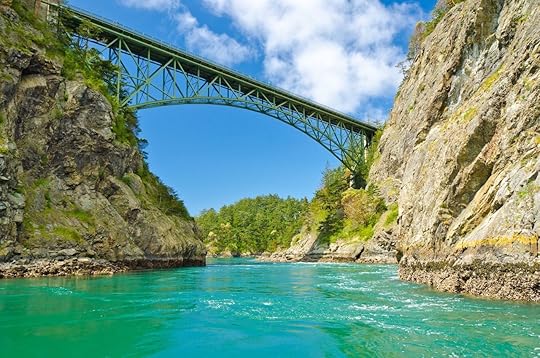
Photo: karamysh/Shutterstock
Hope off Interstate 5 and drive west toward the waterside town of Anacortes on Fidalgo Island. Here you’ll find the famous Deception Pass Bridge that connects Fidalgo and neighboring Whidbey Island. Depending on the tides, the pair of two-lane arched steel bridges sit approximately 180 feet above the water — which makes for breathtaking views of the swirling channel below. If you’re feeling gutsy, park the car and stroll across the bridge to snap a few pictures. Keep your feet stable if you do so, however, as the bridge shakes a bit when a semi-truck passes. If you’re lucky, you’ll spot boats, seals, and once in a while, even an orca or two.
Explore Washington’s most popular state park.
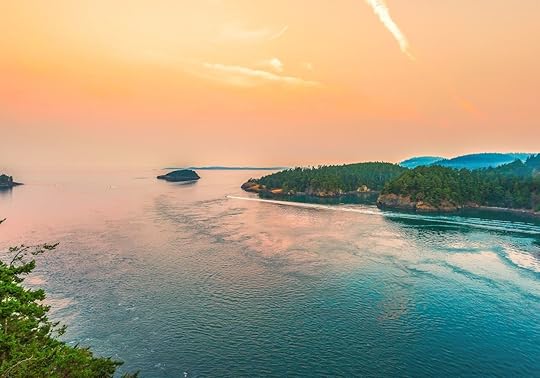
Photo: Checubus/Shutterstock
But don’t stop at the bridge. Head for Deception Pass State Park and discover the old-growth forests, hiking trails, craggy cliffs, and marine life that draw more than two million visitors each year. Without the $30 annual Discover Pass, you’ll need to pay a $10 fee to access the park. Once inside, the first must-see spot is Rosario Beach, where you can explore tide pools filled with little creatures, fill your pockets with colorful sea glass, and take in the Maiden of Deception Pass — a story pole carving based on a Samish legend. While you’re there, don’t miss Cranberry Lake, a beloved swimming and kayaking spot that’s separated from West Beach by a thin sand dune. Take a dip or simply wiggle your toes in the warm sand and then turn around and stroll less than 200 feet to watch the icy waves crash onto the shoreline.
See flowers. So many flowers.

Photo: Pierre Leclerc/Shutterstock
For flower enthusiasts, a stop in Skagit County is the next best thing to a trip to the Netherlands. In spring, you can head to La Conner for the La Conner Daffodil Festival (March) or Mount Vernon for the Skagit Valley Tulip Festival (April) to see millions of in-season blooms. Beyond the festivals, Roozengarde and Tulip Town are the top attractions. The former boasts an authentic Dutch windmill and over 150 tulip varieties, while the latter features trolley rides and a memorial garden honoring veterans. Photo opportunities abound, just don’t walk into the flower fields themselves unless you want a stern talking-to.
Shop (and eat) your way through downtown MV.
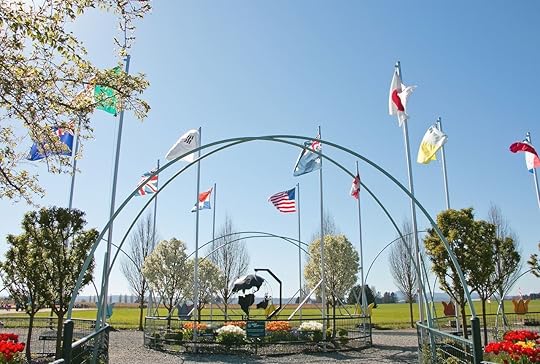
Photo: Belen Strehl/Shutterstock
Many cities in Skagit boast vibrant downtowns, but downtown Mount Vernon is something special. Browse used and out-of-print favorites at Easton’s Books, beef up your record collection at Lost in the Groove, and check out the art supplies and gifts at Tri-Dee Arts, home of the town’s giant “Make Art Not War” mural. Across the street, you’ll find the Skagit Valley Food Co-Op, which offers so much more than food — you could spend hours in the mercantile looking at jewelry, candles, art supplies, and incense. When hunger kicks in, choose from a dizzying array of food and drink options, such as Shambala Bakery & Bistro, where everything’s gluten-free and vegetarian, or the to-die-for crab dip at the Trumpeter Public House. For a craft cocktail, head to Valley Shine Distillery and try the Limoncello. Or, treat yourself to handcrafted chocolate at Forte and then walk off your meal at Skagit Riverwalk Plaza.
Take in a show at a historic theatre.

Photo: Lincoln Theatre
The nonprofit historic Lincoln Theatre in downtown Mount Vernon is a world away from today’s strip mall movie theatres, and catching a show here is sure to make you feel like you walked right into the roaring ’20s. This restored vaudeville and silent movie house, complete with a vintage Wurlitzer organ, is a historic gem. Depending on the schedule, you may be able to enjoy a concert, a play, a film, a musical, a stand-up comedian, or something else. Staff members are friendly and more than willing to chat about the theatre’s rich history, and the parmesan popcorn is delicious.
Hike, bike, or just take in panoramic views.
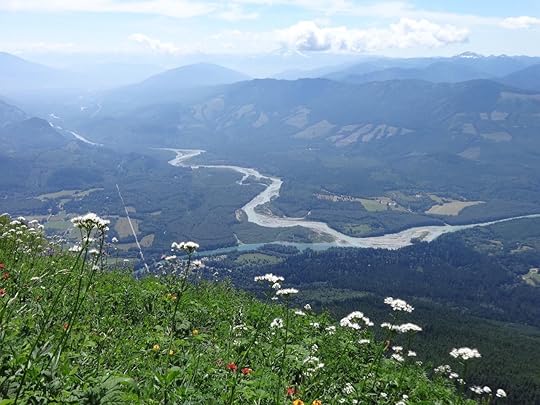
Photo: Aprilflower7/Shutterstock
From central Mount Vernon, drive up a narrow road flanked by tall trees until you reach the top Little Mountain. Right from the parking lot atop Little Mountain Park, you can access the covered observation deck called the South Viewpoint, which offers sweeping views of farmland, the Puget Sound, and the Olympic Mountains. Then walk a few minutes to the North Viewpoint, designed to make you feel like a paraglider, for a panoramic view of Mount Vernon and Burlington, with the San Juan Islands and Mount Baker in the distance.
Once you’ve soaked up the views, hit the trails for a fix of hiking or mountain biking. You have several options, starting with the Bonnie and Clyde Trail, where you’ll encounter a cool old abandoned car. Another popular trail is the Sidewinder, which is made up of a series of switchbacks, as well as the renowned Up Only trail — try this steep hike at your own risk. Soak in the natural beauty of the moss-covered Douglas Fir, big leaf maple, and western hemlock trees and keep an eye out for little red mushrooms which bear an uncanny resemblance to Smurf houses. And try not to step on the slugs.
Take a ferry ride to Guemes Island.

Photo: Marina Poushkina/Shutterstock
If you really want to get away from it all without going too far, take the five-minute ferry ride from Anacortes to Guemes Island. You can drive onto the ferry or walk. Walking is cheaper, but whichever route you choose make sure to check the schedule, as you don’t want to miss the last boat back. Beach-combing right by the ferry dock can yield surprising treasures including seashells, agates, and lots of sea glass — and you’ll likely encounter some cool creatures, whether starfish or seals.
Enjoy a beach picnic at sunset.
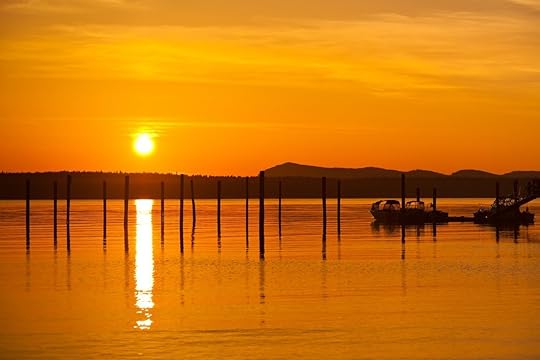
Photo: Paula Cobleigh/Shutterstock
On the western edge of Anacortes lies Washington Park, a 220-acre park where you can drive, bike, or walk the scenic loop road. A favorite among locals, the park is generally uncrowded and gorgeous anytime, but it’s particularly lovely at sunset. There are several viewpoints, including one with a long set of stairs leading down to the beach. Pack a picnic, spread a blanket over one of the warm flat rocks, and soak up the view.
Explore an abandoned mental hospital.
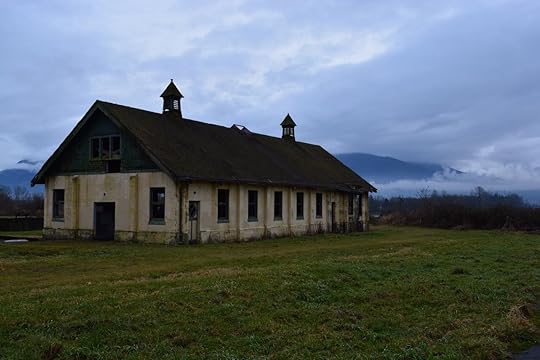
Photo: Morgan Dolph/Shutterstock
Once upon a time, Northern State Mental Hospital, on the eastern edge of Sedro-Woolley, was the largest mental health institution in the state. Now it’s Northern State Recreation Area — a sprawling site that’s equal parts magnificent and slightly disconcerting. As the informational signs explain, the area was once a self-sustaining community complete with a sewage system, greenhouse, laundry area, dairy, bakery, farm, and more. Now it’s essentially a ghost town. Wander through the fields, explore the crumbling buildings, and pay your respects at the cemetery. You may meet joggers, bike riders, dog walkers, photographers, and disc golf players, but sometimes it’s eerily empty.
Spot soaring bald eagles.
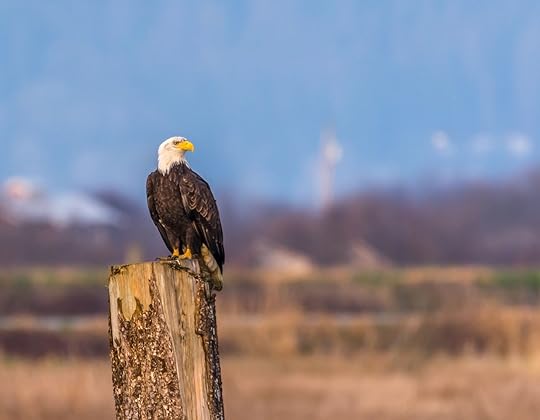
Photo: Marv Vandehey/Shutterstock
If you’re in town on a weekend, the Bald Eagle Interpretive Center in Howard Miller Steelhead Park in Rockport, a short drive past Sedro-Woolley, is well worth a visit. It’s open 10:00 AM to 4:00 PM on Saturdays and Sundays. You can join a guided nature walk, listen to a guest speaker, or simply glean some good info on the best places to spot bald eagles along the Skagit River. Even if you’re not into birdwatching, there’s something magical about seeing eagles up close, and while Seattle and Vancouver undeniably have a whole lot to offer, you’re not going to see an eagle strolling the urban streets. 

More like this: It’s time to treat Columbus, Ohio like the cultural center it is
The post Why Skagit County is worth a stopover between Seattle and Vancouver appeared first on Matador Network.

The best Little Italys in America

If you’re on the keto diet, don’t even bother reading this story. Because no human even hears the words “Little Italy” without smelling garlic, tasting red wine, and reflexively slipping into a carb-induced food coma.
Typically, the Italian food in any neighborhood called “Little Italy” is worth the calories. You can certainly go to Little Italys in New York, Chicago, Philly, and San Francisco and be guaranteed a great meal, but Italian enclaves aren’t limited to huge cities, and the widespread influence of Italian-Americans can be felt from Rhode Island to the Mexican border. So crack open some Chianti, order yourself a pizza, and start planning a trip to these seven Little Italys that’ll instantly ruin your New Year’s resolution.
Providence
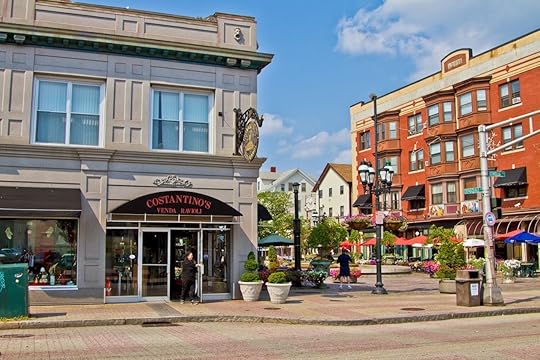
Photo: Go Providence
Not that we’re ever ones to stereotype about organized crime and the types of people who participated in it, but there’s a reason the first-ever Crimetown podcast centered on Providence. The famous Coin-o-Matic building on Federal Hill was the longtime headquarters of L.S. Patriarca, who ruled over the New England mob during its heyday. While that era may have produced some highly unsavory characters, it also produced some very savory foods, including Costantino Venda’s famous ravioli. That’s the best-known dish to come from Federal Hill, but you can’t go wrong eating almost anywhere here, including Angelo’s Civita Farnese, which opened in 1924, and the classic Caserta Pizzeria.
One place you can go wrong is wandering into one of the neighborhood’s old-school Italian social halls, many of which hang sings that explicitly say, “NO TOURISTS.” So maybe skip those and instead peruse the Scialo Brothers Italian Bakery, which has been open for more than 100 years, or the Antonelli Poultry shop, where you can still buy live chickens.
St. Louis
People who haven’t been to St. Louis don’t often understand its diverse history, but the area known as “The Hill” is one of the oldest Italian enclaves in America, dating back almost 200 years to the 1830s. The population was bolstered by the discovery of clay mines in the area, which drew scores of immigrants from northern Italy and Sicily. While Sicilians remained closer to downtown, northern Italians made this neighborhood their own, anchored by the St. Ambrose church that’s modeled after Sant’Ambrogio in Milan.
The church still stands at The Hill’s main intersection of Wilson and Marconi avenues. Across from the church, you’ll find an Italian tavern complete with a bocce court at Milo’s, a gelateria, and Amighetti’s Bakery and Cafe. The Hill birthed two famous St. Louis delicacies, Provel cheese and fried ravioli, as well as baseball Hall of Famers Yogi Berra and Joe Garagiola. The fire hydrants are painted red, white, and green to show the area’s Italian pride.
Baltimore

Photo: Sergey Novikov/Shutterstock
Set between the fashionable Inner Harbor and Fells Point, Baltimore’s Little Italy has been a destination for Italian immigrants since the mid 1800s. Italians made lives for themselves around the Church of St. Leo the Great, building cobblestone streets and opening small shops and cafes to re-create life in the old country. The neighborhood still thrives today, with many residents who are direct descendants of the original settlers.
During the summer, Little Italy becomes a social center for the entire city, hosting outdoor bocce ball leagues and multiple festivals that fill the streets with hungry residents. June has the Feast of St. Anthony, August is the Feast of St. Gabriel, and the Madonnari Arts Festival is around Columbus Day. Still, even once the weather turns cold, you’ll be able to warm up with hearty Italian food from family-run spots like Ciao Bella, Sabatino’s, and Da Mimmo’s, and you can grab some dessert at Vaccaro’s Italian Pastry Shop.
Boston
Thanks to one successful basketball team and a lot of songs by Dropkick Murphys, Boston has become a city associated far more with the Irish than with Italians. But stroll through the narrow, complicated streets of the city’s North End and you’ll find Boston has one of the strongest Little Italys in America. The North End is best known for its seemingly nonstop parade of Italian festivals in the summer, where the smells of fried bread and thick garlic fill the streets nearly every weekend from June until August. That’s because each little region in Italy has a patron saint, each with their own feast. When people from those regions came to America, they chose to celebrate them all — but we’re not complaining.
Boston’s famous Freedom Trail runs right through the heart of the North End, where you’ll learn that long before it was Little Italy it was home to English settlers, Germans, Jews, and African-Americans. Today, it’s also a destination for fantastic food like the savory meats and fresh pastas at Antico Forno or the pizzas at Artu. The North End might not have the Italian population it did 75 years ago — it’s only about a third Italian today — but it’s still a must-do on any visit to the city.
San Diego
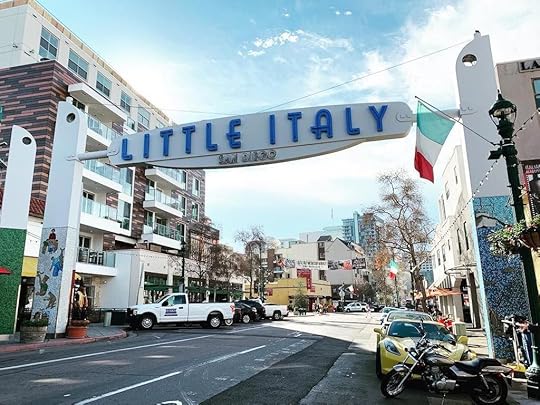
Photo: Mona Lisa Italian Foods/Facebook
Fun fact to impress exactly no one with tonight: America’s largest Little Italy is this 48-square-block section near downtown San Diego, home to nearly 6,000 Italian families during its height in the 1920s. The city’s tuna fishing industry drew seafaring Italians up through the 1930s, but as that industry declined in the middle of the century, the neighborhood fell into disrepair. It wasn’t helped by the construction of I-5, which cut right through the heart of the neighborhood and destroyed over a third of its buildings.
About 20 years ago, a group of local business owners formed the Little Italy Association, and with it have brought back the soul of the area. Highlights include the classic Italian restaurant and market Mona Lisa as well as the modern Italian spots Civico 1845, Rovino, and pasta-heavy Bencotto. There’s also a taste of craft beer in the area from Ballast Point, and San Diego’s Little Italy features tasting rooms from California’s coveted wine country, like Santa Barbara’s Pali Wine Company.
New Haven, Connecticut
With just over 130,000 people, New Haven isn’t generally thought of as a home to historic immigrant neighborhoods. But when Italians began migrating in large numbers to America, the city was an industrial giant and had plenty of low-skill, decent-paying jobs for recent arrivals. By 1910, New Haven was home to 13,000 Italian immigrants, most of whom settled around Wooster Street. While this Little Italy is dwarfed by Little Italys in Philadelphia and New York, the short street still feels like it might have 100 years ago.
Many of the restaurants along Wooster are still owned by the families who started them decades ago, including Frank Pepe’s, the go-to for New Haven-style “apizza.” Also still around is Libby’s Italian Pastry Shop, which feels like a time warp to 1955 when you walk inside. The large park along the street has a giant statue of Christopher Columbus, who may have fallen from American historical grace over the last 50 years, but was an Italian hero when it was erected.
Cleveland
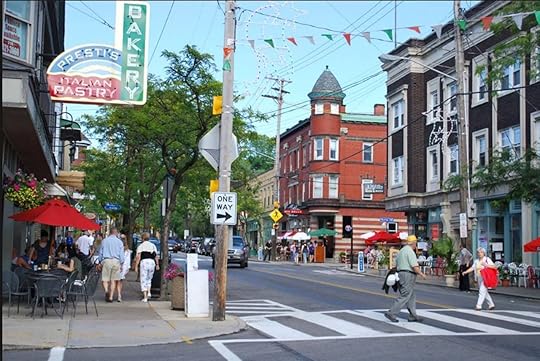
Photo: Little Italy Cleveland/Facebook
Cleveland’s Little Italy was founded by skilled artisans who immediately filled the area around Mayfield Road with art and culture. Quite the antithesis of Cleveland’s blue-collar reputation, but it has left Little Italy with a strong legacy of art. It’s now one of the city’s top destinations for galleries with spots like Pennello and La Bella Vita leading the way. It’s also home to a thrice-annual Little Italy Artwalk, where on the first weekends of June, October, and December, people are invited to tour through the neighborhood’s studios and galleries.
But just because Cleveland’s Little Italy is known for art doesn’t mean it’s lacking in food. You’ll find plenty to fill your stomach at classically Italian restaurants Mama Santa’s and Michelangelo’s, plus plenty of sweet stuff at Presti’s and Corbo’s bakeries. And, of course, no Italian experience is complete without wine, so be sure to stop into the obviously named Little Italy Wines for vino that’s hard to find outside The Boot. 

More like this: How to drink like a local in Italy
The post 7 of the best Little Italys in America you probably haven’t been to appeared first on Matador Network.

Matador Network's Blog
- Matador Network's profile
- 6 followers



